#forensicbiology
Text
instagram
Study Forensic Science Abroad📚🌎
Forensic scientists study and analyse evidence from crime scenes and other locations to produce objective results that can aid in the investigation and prosecution of criminal criminals or clear an innocent person of suspicion.
The United States, Canada, Australia, and the United Kingdom are among the greatest places to study forensic science.
Do you need any assistance regarding Study Abroad journey, Career Guidance, Application Filing, or VISA processing ED4WO is here to hep you out !
Feel Free To Contact Us
https://ed4wo.com/contact/
Via Phone:
+91 8010-409-409
#forensicscience#forensicscienceacademy#forensicbiology#forensicscientists#forensicscientist#forensicpsychology#forensiceducation#forensicanthropology#forensicknowledge#forensicstudy#science#forensic#forensiclab#forensicevidence#forensicfield#forensicinvestigation#forensicexamination#forensicstudygram#sciences#scienceday#ED4WO#Instagram
0 notes
Text
Types of Bone Fractures
The various types of bone fractures exhibit distinct characteristics and can be classified accordingly.
#Typesofbonefractures #forensicscience #forensicfield #forensicbiology
Continue reading Untitled
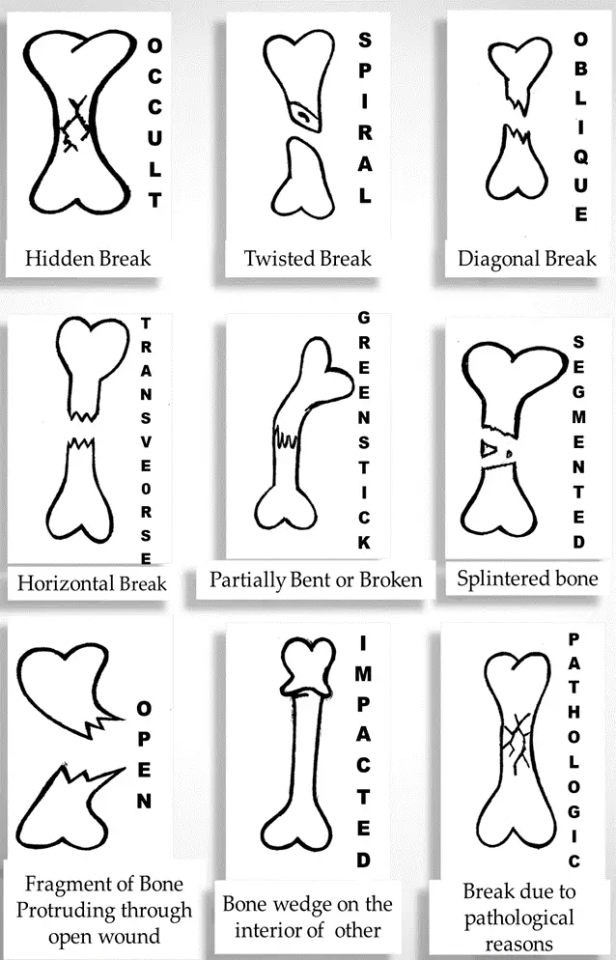
View On WordPress
#avulsion fracture#comminuted fracture#compression fracture#greenstick fracture#impacted fracture#oblique fracture#pathological fracture#segmental fracture#spiral fracture#stress fracture#transverse fracture#Types of Bone Fractures
6 notes
·
View notes
Photo
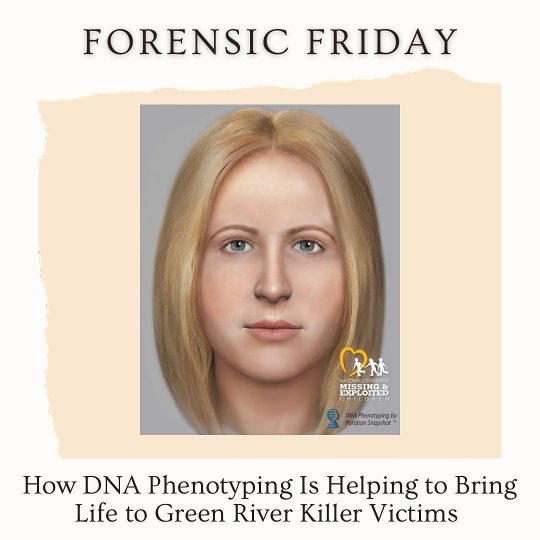
Posted @withregram • @kellythescientist A little late night #ForensicFriday anyone?! A new reconstruction of one of the Green River Killer’s unidentified victims was released today with the help of DNA Phenotyping! Swipe through to learn more and share her image, someone may know her! . . . . . . Sources: Help ID Me https://m.facebook.com/698376120190298/posts/4333305443363996/?d=n https://snapshot.parabon-nanolabs.com/phenotyping https://en.m.wikipedia.org/wiki/Gary_Ridgway . . . . . . . . #forensicscience #forensics #forensicscientist #csi #crimesolvers #coldcase #truecrime #crimesceneinvestigation #crimescene #garyridgway #criminology #criminalistics #crimescenecleanup #DNA #forensicDNA #forensicbiology #forensicfiles #forensicevidence #parabonnanolabs #serialkiller #biologist #wocinstem #womendoingscience #womeninscience #scicomm #greenriverkiller #biology #serialkillers #dnaphenotyping https://www.instagram.com/p/CNM97XXByjQ/?igshid=jnzthxk84au2
#forensicfriday#forensicscience#forensics#forensicscientist#csi#crimesolvers#coldcase#truecrime#crimesceneinvestigation#crimescene#garyridgway#criminology#criminalistics#crimescenecleanup#dna#forensicdna#forensicbiology#forensicfiles#forensicevidence#parabonnanolabs#serialkiller#biologist#wocinstem#womendoingscience#womeninscience#scicomm#greenriverkiller#biology#serialkillers#dnaphenotyping
0 notes
Photo

Give the gift of true crime. And leave lots of evidence. #evidencebased #evidence #forensicevidence #csilovers #csi #realcsi #therealcsi #forensicentomology #forensicnursing #forensicphotography #forensicbiology #forensicsciencemajor #forensictraining #forensicengineering #forensicarchaeology #forensicarchitecture #evidencelocker https://www.instagram.com/p/B5g1lEgJeGx/?igshid=2bwifvxfqled
#evidencebased#evidence#forensicevidence#csilovers#csi#realcsi#therealcsi#forensicentomology#forensicnursing#forensicphotography#forensicbiology#forensicsciencemajor#forensictraining#forensicengineering#forensicarchaeology#forensicarchitecture#evidencelocker
0 notes
Text
A Curious Case of Whodunnit?
Hey everyone,
Alanna here, for as long as I can remember I have always had a vested interest in the macabre. The Nancy Drew and Hardy Boys books that I read at the age of seven quickly became Dashiell Hammett and James Patterson novels. Scooby-Doo became procedural cop shows and true crime documentaries. Whodunnit puzzles were a frequent request when asked, “What would you like for your birthday,” and while the scientific accuracy in many of these guilty pleasures left a lot to be desired, they did foster an early interest in forensic biology.
Currently I am in the fourth year of a comprehensive biology-chemistry degree at the University of New Brunswick. While my interest in forensic biology has never waned, along the pursuit of my degree I have found other topics that have captured my attention. Over the last four years, my interest in molecular biology has only grown. Leading to many questions about the intersection of these two topics, Molecular Forensics. Questions like, how much information can we tell about a species, or person based on their genetic information? Could biological evidence be used to calculate a criminal profile? Could we estimate things like age, race, environmental exposures, and geographical origin?
The application and implication of molecular forensics is continually growing due to the advances that have been made, and continue to be made, in molecular biology technologies. Criminal cases that would have once been impossible to solve are now finding justice. DNA samples once thought too small or too degraded are now being analyzed. Differences, once believed not to exist, have been found in the genetic information of monozygotic twins.
Over the course of this blog, we will delve into some of the current and potential future applications of molecular forensics. We will look at some of the research currently being done, and some cases that have benefited from the advances seen in this field. Hopefully you will enter with an open mind and leave with an increase in curiosity as well as a newfound, or renewed interest in figuring out whodunnit.
Until next time,
Alanna

Image from US National Library of Medicine https://collections.nlm.nih.gov/bookviewer?PID=nlm:nlmuid-28511780R-bk#page/1/mode/2up
8 notes
·
View notes
Text
Forensic Biology and Forensic Genetics: Analyzing Biological Evidence and DNA for Crime Scene Investigation
Forensic Biology is the field of forensic science mainly concerned with studying biological evidence found at the crime scene and submitted for subsequent investigation.
#Forensicbiology #forensicscience #biology
Continue reading Untitled

View On WordPress
2 notes
·
View notes
Text
Delta and Core
A delta, by the technical definition is a place where two lines run side-by-side and then diverge to form a triangle.
In Image you can see where the three sides of the delta form three sides of a triangle.
Deltas help to determine the fingerprint pattern.
A core is a “dead end” formed by a ridge that loops back on itself.
----
Methods used for visualizing latent fingerprints.
Latent fingerprints are not visible, but some techniques can make them visible. Dusting surfaces such as drinking glasses, the faucets on bathroom sinks, telephones, and the like with a fine carbon powder can make a fingerprint more visible. Tape is then used to lift and preserve the fingerprint. The tape with the fingerprint is then placed on an evidence card on which the date, time, location, and collector of the print is logged. Proper evidence collection techniques involve photographing the fingerprints before they are lifted. Metal or magnetic powders can also be used. They are less messy than carbon-based powders.
----
Follow @forensicfield for more info
Join @forensicfield on Telegram for pdf, MCQs, book and much more...
Like the knowlege then Like the post...


#forensics#forensic#criminology#evidence#forensicbiology#crime#forensic science#forensic field#Fingerprint#Fingerprint detection#delta#core#fingerprints
3 notes
·
View notes
Text
Preparation of NET/JRF Forensic Science
We are going to Upload a series of Videos according to syllabus of NTA NET/JRF.
These Multiple Choice Questions will help in preparation of examination.
These videos will be prepared in following manner:
Syllabus has been divided into 10 Units and every unit has Pointed topics.
For example Unit - I consists
▪️Forensic Science,
▪️Physical Evidence,
▪️Crime Scene,
▪️Criminal Investigation,
▪️Courts,
▪️Organization of Forensic Science Laboratories of center and state, ▪️Fundamental rights,
▪️Criminal Profiling,
▪️Concept of quality control management in Forensic institutions.
So we will called it as a Topic 1, Topic 2 and so on.
In this Video we have covered Topic 1
Forensic Science: Definition, History & Development, Scope & Ethics in Forensic Science.
For More MCQs please Subscribe Our channel.
Like it✅, Share it↩ and Subscribe it✔.....
youtube
#forensicscience#forensics#forensic#forensicfield#criminology#forensicstudy#crimescene#forensicintro#forensicinvestigation#forensicbiology#netjrfforensic#netjrfquestionanswer#netjrfrelatedforensicquestion#netjrf#Youtube
22 notes
·
View notes
Text
Stay Safe







#corona#covid#covid19#forensics#forensicbiology#forensic#criminology#criminalistic#evidence#crime#forensic science#forensic field#knowledge
2 notes
·
View notes
Photo

Question- What is Forensic Graphology?
Answer- Forensic graphology is the study of handwriting.
It is also known as graphoanalysis.
Graphology is a process that is used by some to attempt to determine personality traits and details about a person based off of their handwriting.
Forensic investigators use handwriting pattern/technology to determine personality traits of an individual.
#forensics#forensicscience#crimescene#forensic#criminology#forensicfield#forensicmcq#forensicquestionandanswer#forensicstudy#forensicinvestigation#evidence#forensicbiology#suspecteddocument#forensicknowledge#forensictoxicology#physicalevidence#questioneddocument#forensicexamination#forensicintro#forensiceducation#netjrf#forensicnetexamination#handwritinganalysis#handwriting#graphology#graphoanalysis
6 notes
·
View notes
Photo
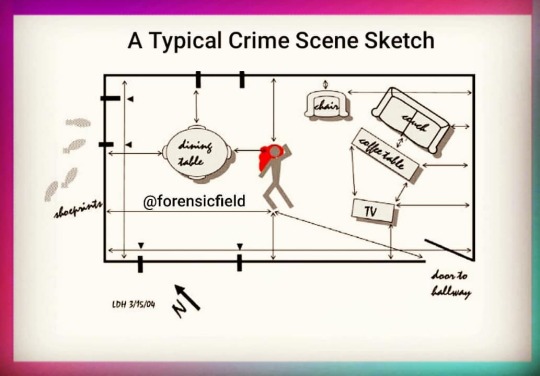
Question- What is Crime Scene Sketch?
Answer- A crime scene sketch is a permanent record of the size and distance relationship of the crime scene and the physical evidence within it. The sketch serves to clarify the special information present within the photo-graphs and video documentation, because the other methods do not allow the viewer to easily gauge distances and dimensions. A sketch is the most simplistic manner in which to present crime scene layout and measurements.
Photographer /camera positions may be noted within a sketch also.
Question- Why is a sketch important to crime scene documentation?
Answer-
■ It accurately portrays the physical facts.
■ It relates to the sequence of events at the scene.
■ It establishes the precise location and relationship of objects and evidence at the scene.
■ It helps to create a mental picture of the scene for those not present.
■ It is a permanent record of the scene.
■ It usually is admissible in court.
■ It assists in interviewing and interrogating.
■ It assists in preparing the written investigative report.
■ It assists in presenting the case in court. Well-prepared sketches and drawings help judges, juries, witnesses, and others to visualize the crime scene.
Question-When should sketches be made?
Answer- Sketch all serious crimes and accident scenes after photographs have been taken and before anything is moved.
Sketch the entire scene, the objects, and the evidence.
Question- How many types of sketches are made of crime scene?
Answer- Two types of sketches are made with regards to crime scene documentation:
1.) Rough sketches, and
2.) Final/finished sketches.
#forensics#forensicscience#crimescene#forensic#criminology#forensicfield#forensicmcq#forensicquestionandanswer#forensicstudy#forensicinvestigation#evidence#forensicbiology#suspecteddocument#forensicknowledge#forensictoxicology#physicalevidence#questioneddocument#forensicexamination#forensicintro#forensiceducation#netjrf#forensicnetexamination#crimescenesketch#crimesceneinvestigator#crimesceneinvestigation
8 notes
·
View notes
Photo

Fracture:
A fracture is a break in a bone.
Fractures can range from a hairline crack in the bone to the bone being broken into two or more pieces that no longer line up correctly. A fracture may occur at the same time as other injuries, such as sprains, strains, or dislocations.
Recovery time for a fracture can vary from weeks to months depending on a person’s age and health; the type, location and severity of the fracture.
Types of Fractures;
Fractures have a variety of names. Below is a listing of the common types that may occur:
Greenstick - Incomplete fracture. The broken bone is not completely separated.
Transverse - The break is in a straight line across the bone.
Spiral - The break spirals around the bone; common in a twisting injury.
Oblique - Diagonal break across the bone.
Compression - The bone is crushed, causing the broken bone to be wider or flatter in appearance.
Comminuted - The break is in three or more pieces and fragments are present at the fracture site.
Segmental - The same bone is fractured in two places, so there is a “floating” segment of bone.
What Causes a Fracture?
Fractures occur when there is more force applied to the bone than the bone can absorb. Bones are weakest when they are twisted. Breaks in bones can occur from falls, trauma, or as a result of a direct blow or kick to the body
Smoking and Bone Fracture:
Tobacco and nicotine increase the risk of bone fractures and interfere with the healing process, according to a growing body of research. Nicotine can slow fracture healing, estrogen effectiveness, and can counter the antioxidant properties of vitamins C and E.
____________
#forensics#forensicscience#crimescene#forensic#criminology#forensicfield#forensicmcq#forensicquestionandanswer#forensicstudy#forensicinvestigation#evidence#forensicbiology#suspecteddocument#forensicknowledge#forensictoxicology#physicalevidence#questioneddocument#forensicexamination#forensicmedicine#forensicanalysis#boneandforensic#boneanalysis#bonefracture#smoking#crimesceneinvestigation#criminalistic
9 notes
·
View notes
Photo
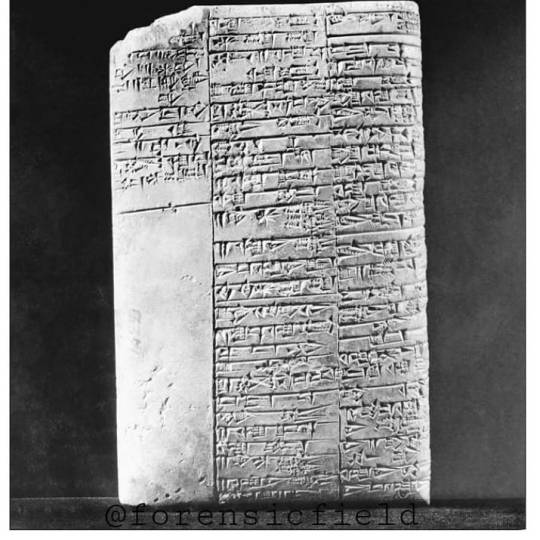
History of Drug, Poison and Chemistry
Chemistry and forensic chemistry developed largely from ancient knowledge and techniques associated with medicines. This 4,000-year-old Sumerian clay tablet in the Museum of the University of Pennsylvania has been translated by Dr. Samuel Noah Kramer of the museum and by Dr. Martin Levey of Pennsylvania State College. The tablet contains the oldest-known medical handbook. A portion reads: “White pear tree, the flower of the ‘moon’ plant, grind into a powder, dissolve in beer, let the man drink.”
(Bettmann/CORBIS/
photo dated September 27, 1953)
#forensics#forensicscience#crimescene#forensic#criminology#forensicfield#forensicmcq#forensicquestionandanswer#forensicstudy#forensicinvestigation#evidence#forensicbiology#suspecteddocument#forensicknowledge#forensictoxicology#physicalevidence#questioneddocument#forensicexamination#forensicintro#forensiceducation#netjrf#forensicnetexamination#forensicchemistry#historyofforensic
6 notes
·
View notes
Photo
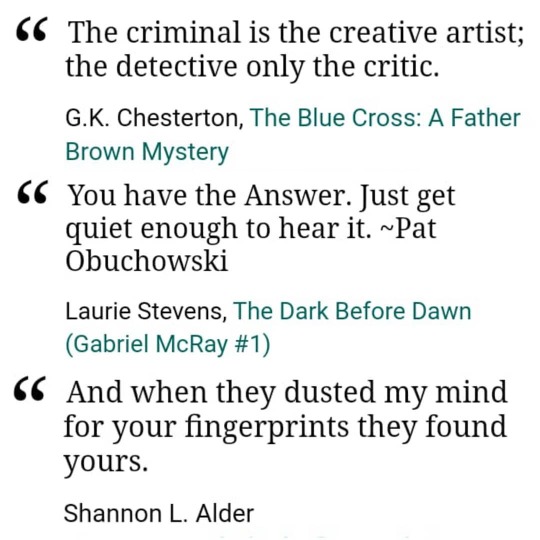
Best Forensic Lines from Best Novels.
The Dark Before Dawn by Laurie Stevens is my favorite.
Which crime novel is your favourite?
Tell us in comment section 💬
#forensics#forensicscience#crimescene#forensic#criminology#forensicfield#forensicmcq#forensicquestionandanswer#forensicstudy#forensicinvestigation#evidence#forensicbiology#suspecteddocument#forensicknowledge#forensictoxicology#physicalevidence#questioneddocument#forensicexamination#forensicintro#forensiceducation#netjrf#forensicnetexamination#crimenovel#crimefiction#novel#detective#forensicquotes#forensiclines#forensicsayings
4 notes
·
View notes
Photo
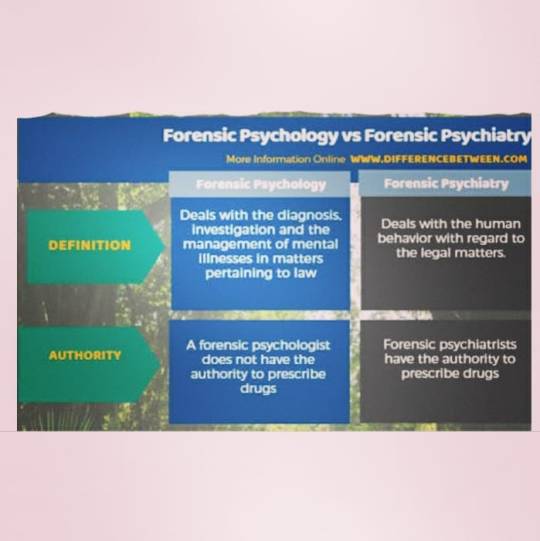
Beginning of Forensic Psychiatry
The beginnings of this specialty of the forensic sciences is the M’Naughten case in England, in which an insane person shot a government official and was found guilty by virtue of insanity. One of the leaders in this field of psychiatry was Dr. I. Ray, who contributed a treatise on the medical jurisprudence on insanity. Quen had written about earlier historical aspects of forensic psychiatry in America as well. The English Court cases are summarized in this field. The development of criminal profiling is another approach in support of police investigation of cases based on a study of the behavior of the serial murderer so that a suspect can be evaluated before and after he has been placed into custody.
#forensics#forensicscience#crimescene#forensic#criminology#forensicfield#forensicmcq#forensicquestionandanswer#forensicstudy#forensicinvestigation#evidence#forensicbiology#suspecteddocument#forensicknowledge#forensictoxicology#physicalevidence#questioneddocument#forensicexamination#forensicintro#forensiceducation#netjrf#forensicnetexamination#forensicpsychiatry#forensicpsychology#psychology#insanity#mcnaughtenrule#historyofforensicscience#historyofforrensicpsychiatry
5 notes
·
View notes
Photo

Trace Evidence
Trace evidence often refers to minute samples of a substance such as hair, fibers, glass, paint chips and fragments. Crime scenes commonly contain trace evidence, often caused by the perpetrator unknowingly coming into contact with surfaces and leaving behind or picking up particulates.
Careful collection of evidences from crime scene can give lots of information about where a sample came from and how it helps to tell the story. Scientists examine the physical, optical and chemical properties of trace evidence and use a variety of tools to find and compare samples, and look for the sources or each item. Most test methods require magnification and chemical analysis.
Like it✅, Share it↩ and Subscribe it✔…..
Watch this video For more info:
https://youtu.be/8pYtQtowDpA
#forensics#forensicscience#crimescene#forensic#criminology#forensicfield#forensicmcq#forensicquestionandanswer#forensicstudy#forensicinvestigation#evidence#forensicbiology#suspecteddocument#forensicknowledge#forensictoxicology#physicalevidence#questioneddocument#forensicexamination#forensicintro#forensiceducation#netjrf#forensicnetexamination
4 notes
·
View notes